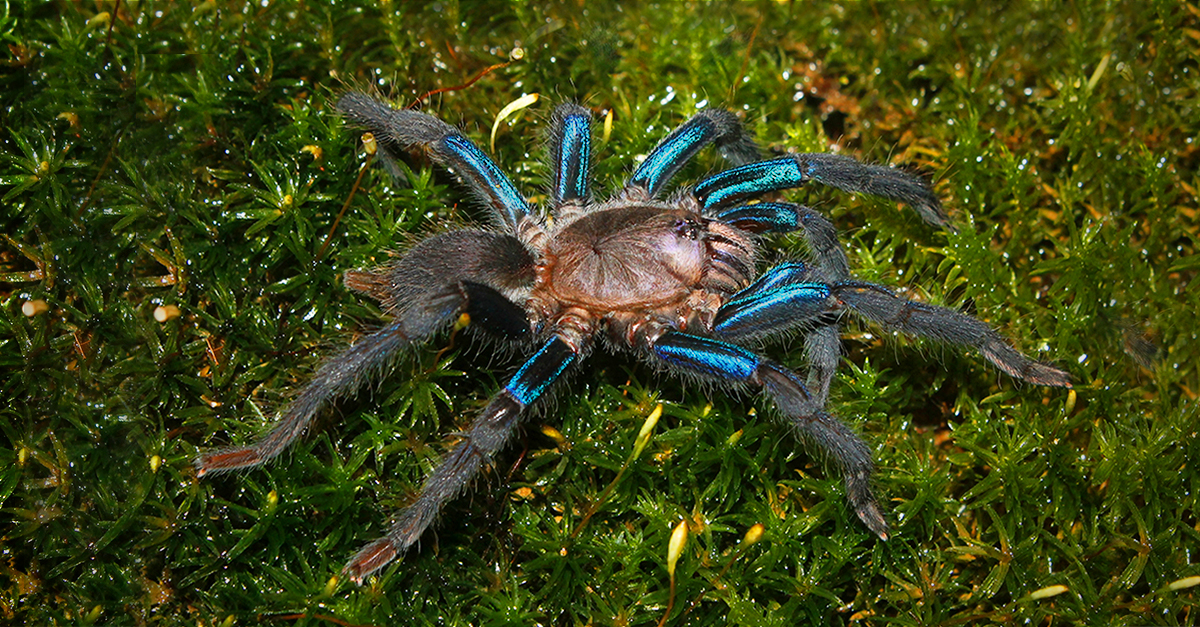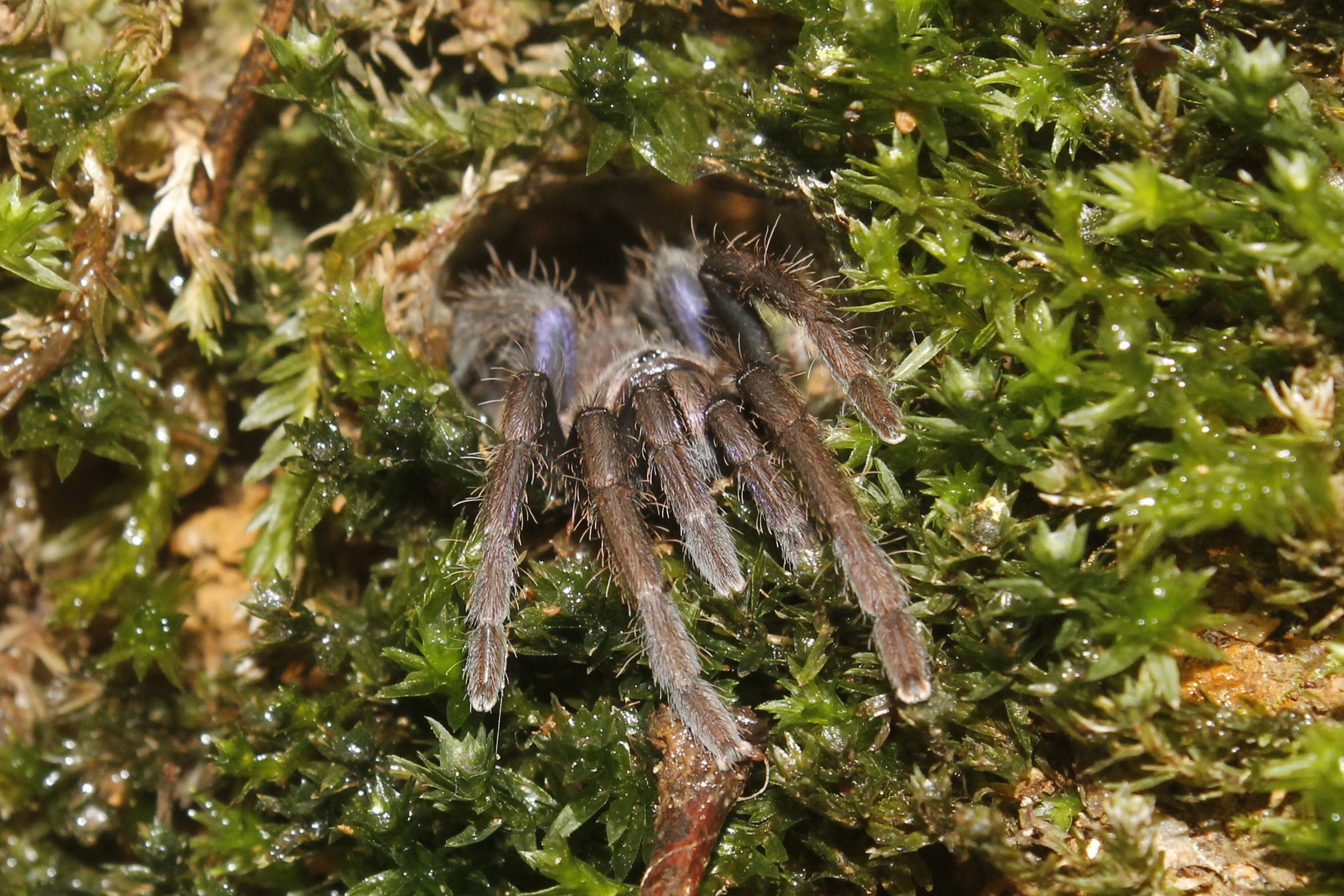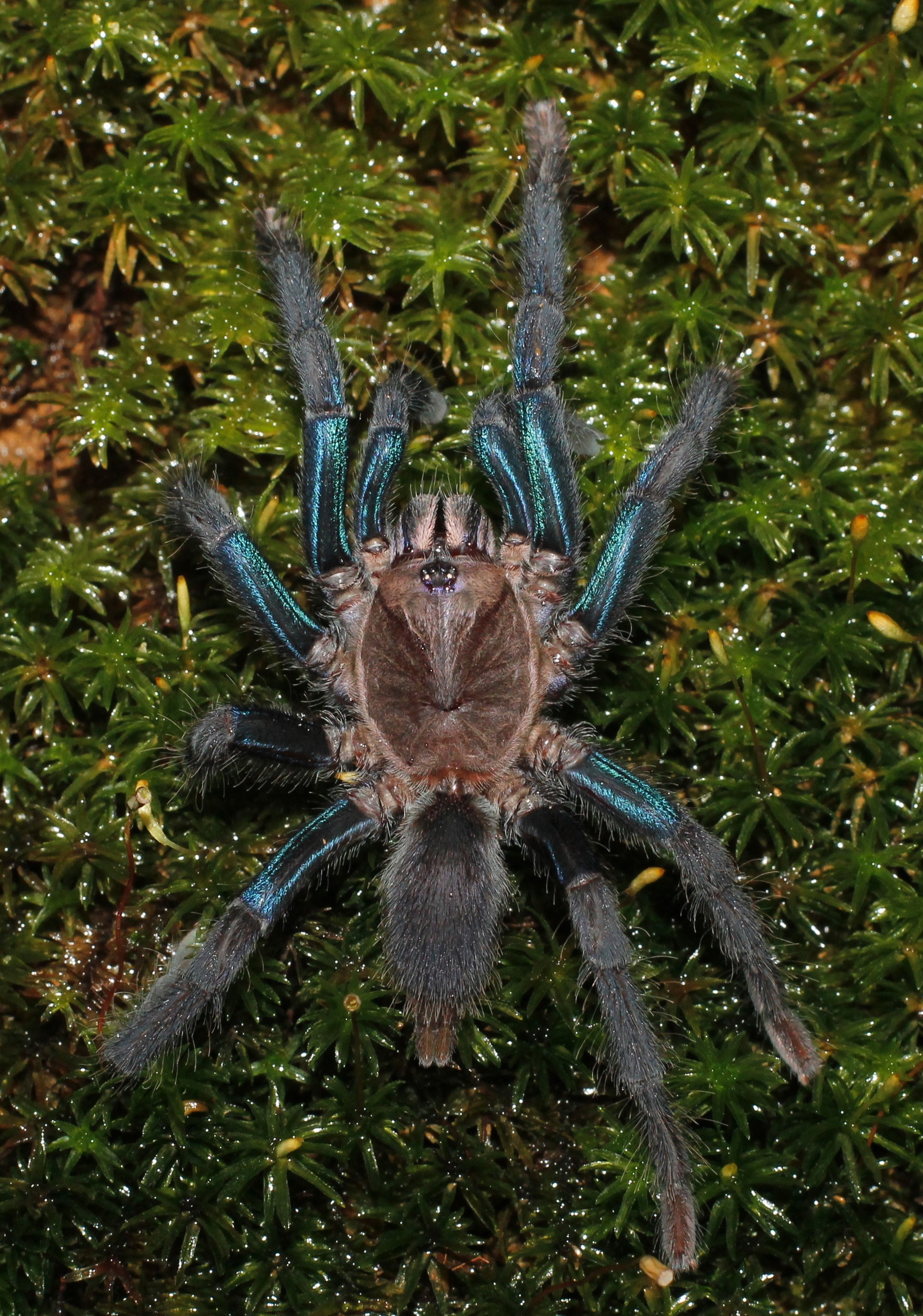
It was in the small patch of rainforest in the western province, in 2012, that Amila Prasanna Sumanapala, a researcher and field biologist at the University of Colombo, first noticed a shimmering blue spider scurrying around in the underbrush.
But Sumanapala wasn’t completely sure if this blue spider was a new species, so he sent his colleague, Ranil Nanayakkara, a conservation biologist specialising in arachnology, to the rainforest to take photographs.
“When I first spotted them I was in awe, at a loss for words,” Nanayakkara told Roar Media. “Subsequently, when I analysed it, I realised it was a species hitherto unknown to science.”

The unusually adorned arachnid, which measures up to five inches long and is a predator that hunts insects from underground burrows, was found in a section of Sri Lanka’s southwestern rainforest, surrounded by tea and rubber plantations. This blue tarantula was given the scientific name Chilobrachys jonitriantisvansicklei, after Joni Triantis Van Sickle conservationist and founder of IDEA WILD, a project dedicated to protecting biodiversity around the world.
Based on the external morphology, it was, at first, very difficult to say if C. jonitriantisvansicklei was a new species or not. It was only after dissecting the spider and examining its reproductive organs that Nanayakkara found it was unique among the tarantulas of South and Southeast Asia. It was following this conclusion, that he and his colleagues published their findings in the British Tarantula Society Journal.

Photo Credit: Ranil Nanayakkara
“On sight, when I saw the photograph, there are no other species of Chilobrachys which has those vibrant colours,” Nanayakkara said. C. jonitriantisvansicklei is only the second species within the Chilobrachys genus to be found in Sri Lanka—the first was a drab brown spider called C. nitelinus, that was identified 126 years ago. While the females of C. jonitriantisvansicklei have a metallic turquoise-blue sheen on all eight legs, as well as on their hard upper shell and abdomen, he noted that the males were smaller and mossy brown in colour.
“When you compare it with other spiders, if you take the genus poecilotheria, the ventral side (underside), has shades of yellow, lemon, black and so on. That is because they rear up when they are threatened, show their fangs—and the bright colour fends off predators,” Nanayakkara said. “But when it comes to this particular animal, we are yet to discover the reason [for their vibrant colouring].” Since the ventral part of C. jonitriantisvansicklei is all black, it doesn’t follow this same line of thinking. However, Nanayakkara noted that in general, animals with bright colours communicate to other animals that they are venomous or poisonous—even though this can be misleading when the animal is not actually venomous.
Although first encountered in 2012, it took a while to develop an understanding of the ecology and biology of the C. jonitriantisvansicklei.“So far, we’ve only found it in a particular area, inhabiting these sandbanks,” Nanayakkara said. “Based on its size, I suspect that it mainly eats insects. However other spiders of this genus have been recorded eating small reptiles such as geckos and small snakes.”
As Exotic Pets
In recent years, there has been a growth in demand for exotic animals, especially for beautiful tarantulas, in European countries, the U.S., and certain parts of South Asia. Much of this can be attributed to the popularity of e-commerce and social media websites which have provided a way for people to easily advertise the sale of live animals.

Photo Credit: Ranil Nanayakkara.
“It is difficult to say what scale the exotic pet trade is in Sri Lanka, but it does exist,” Nanayakkara said. “We find exotic animals for sale in other parts of the world that are endemic to Sri Lanka, and since there is no quota or a legal way for these to be exported, they must have been captured and transported illegally.” Dealers or buyers enter the country as tourists and take back with them various exotic species, especially creatures that can be easily transported. Most local tour guides are unaware of the trade as they lack the training to identify such illegal dealers.
The Convention on International Trade in Endangered Species of Wild Fauna and Flora (CITES), an international agreement signed by 183 countries, has voted to ban or limit trade in many animal species sought after as pets.
“Under the CITES agreement, you need a valid permit to obtain specimens, and the relevant authority in Sri Lanka must allow you to take it out,” Nanayakkara said. “This is why we haven’t disclosed the specific location we found the spider, in order to prevent this illegal trade.”
Sri Lanka and the U.S. are in the process of proposing more stringent trade regulations for all 15 tarantula species in the genus Poecilotheria, also known as ‘tiger spiders’, five of which are found only in Sri Lanka. In addition to regulating their trade, it is also important to protect the habitats in which these spiders are found. As many of them are endemic to specific rainforests in Sri Lanka, human incursion and deforestation could ultimately lead to their extinction.
Currently, C. jonitriantisvansicklei is not listed under the CITES or the local Fauna and Flora Protection Ordinance. “For new species, we have to get Bills passed with the relevant departments,” Nanayakkara explained. “And even if such species are not endangered, their protection is important to local biodiversity and the health of the ecosystem.”








